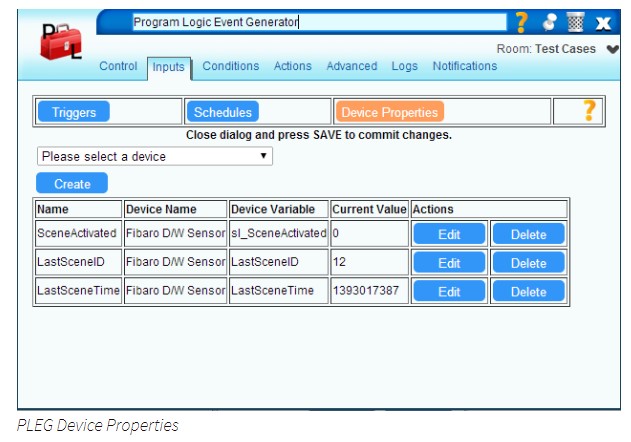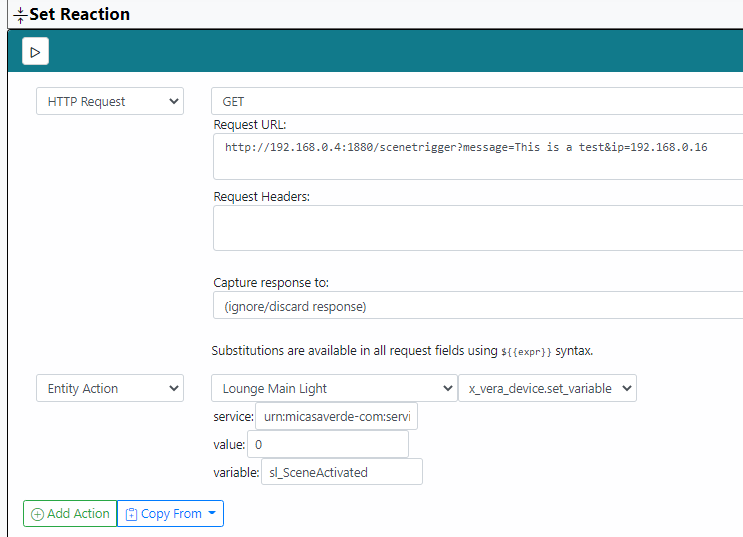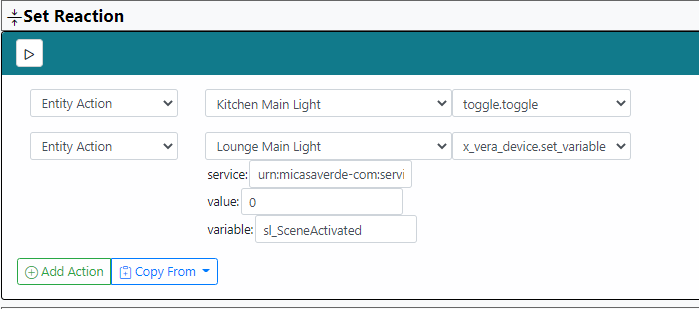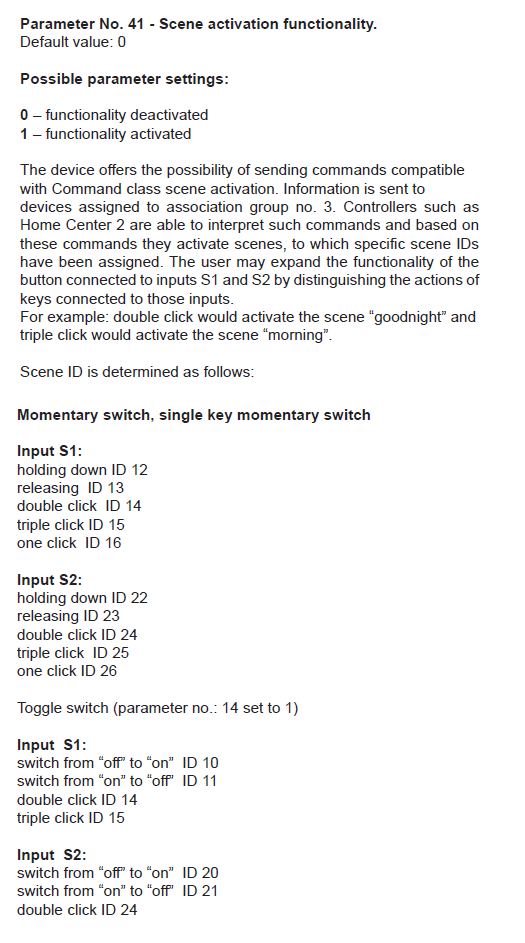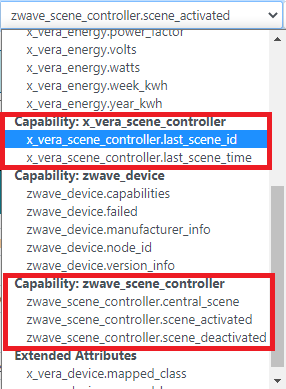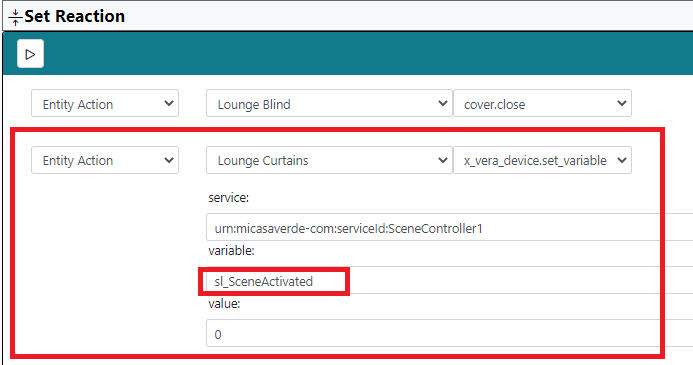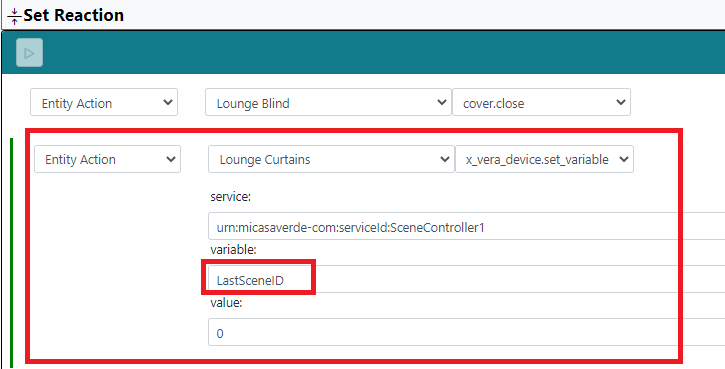system capability zwave_scene_controller
-
Ohh!
I will try this out as I have several of this fibaro dimmer.This dimmer was actually one of the first devices I bought to my Vera Edge.
I was so disappointed when I realized it wasn't supported in Vera and the zwave standard not as compatible as it first seems.
To further annoy me my brother bought a Homey a couple of years later and it immediately supported all fibaro stuff with an easy to use gui for all the parameters.I also think I have a qubino dimmer that have 2 input ports were the second that doesn't control the dimmer isn't recognized by Vera.
Anyone know if that also is a scene controller that Reactor could see and use? -
You need to check both the response value and the timestamp (the changes operator is all you need for the timestamp check).
@toggledbits said in system capability zwave_scene_controller:
the changes operator is all you need for the timestamp check
I already tried that earlier, that does work sort of.
If I add a second trigger for the time stamp and changes from anything to anything.
I can then double click the wall switch and the Reaction runs. I can then double click it again and the Reaction runs again a second time OK.
However when I reload the Luup engine on Vera the rules reaction fires two or three times whist Vera is reloading. So that time stamp must be changing somehow during a reload.
Not sure what's going on but it's a problem somewhere.
-
Ohh!
I will try this out as I have several of this fibaro dimmer.This dimmer was actually one of the first devices I bought to my Vera Edge.
I was so disappointed when I realized it wasn't supported in Vera and the zwave standard not as compatible as it first seems.
To further annoy me my brother bought a Homey a couple of years later and it immediately supported all fibaro stuff with an easy to use gui for all the parameters.I also think I have a qubino dimmer that have 2 input ports were the second that doesn't control the dimmer isn't recognized by Vera.
Anyone know if that also is a scene controller that Reactor could see and use?@andr said in system capability zwave_scene_controller:
Anyone know if that also is a scene controller that Reactor could see and use?
Never used Qubino dimmers.
Qubino are not my favourite brand at the moment but that's another story.
What does the user manual say? Look for scene activation.
-
@toggledbits said in system capability zwave_scene_controller:
the changes operator is all you need for the timestamp check
I already tried that earlier, that does work sort of.
If I add a second trigger for the time stamp and changes from anything to anything.
I can then double click the wall switch and the Reaction runs. I can then double click it again and the Reaction runs again a second time OK.
However when I reload the Luup engine on Vera the rules reaction fires two or three times whist Vera is reloading. So that time stamp must be changing somehow during a reload.
Not sure what's going on but it's a problem somewhere.
@cw-kid said in system capability zwave_scene_controller:
Not sure what's going on but it's a problem somewhere.
No, it's a Vera thing. There are three things going on that make their implementation choices for scene controllers really sticky...
- When Vera reloads/reboots, it sets a timestamp on every state variable on every device to the startup timestamp. Timestamps are not stored in the persistent user_data, so any previous timestamp is lost. Every time Vera starts, every state variable get a new timestamp.
- Not only do the timestamps not appear in user_data for the states, they are not exported with the user_data or status queries. In other words, the timestamps are locked inside Vera's head and not available outside.
- When you set a state variable on Vera, if and only if the value changes is the new value set and the timestamp updated. And in turn, for any plugins that are running on Vera and have watches on those state variables, their callbacks get called. If you attempt to set a state variable to the same value it already has, the timestamp and value and not modified, and the watch callbacks are not called. But there's an exception. Probably to support their crazy way to handling scene controllers, any state variable that starts with
sl_will update its timestamp even if you rewrite it with the same value it already has.
On the Vera, it works out that any plugins that handle the scene controller state variables, like Reactor or PLEG, or my SceneSlayer plugin, or the other scene controller plugin whose name escapes me at the moment, handle all this OK because, principally, the watch callback doesn't get called at system boot, and does get called otherwise. So it's pretty easy to detect repeat activations of the same scene, although it still takes some effort, as seen in the approaches one must use in both Reactor for Vera and PLEG.
Off the Vera, however, the combination of the above three choices are just a near-fatal limitation. Without a stable timestamp that comes from the Vera itself, there's just no way to tell if you're looking at an original value or a repeated value.
Anyway, there's still one good alternative, and it's simple: after you act on the scene activation (i.e. in the Set reaction), set the source state variable to 0 or some other value outside the range of normal (-1 or -999 or whatever). I've referred to this in the notes for your PR, so check there for more specifics.
I've tested it with my scene controllers in MSR and it works fine.
-
I think its working OK now:
Trigger:
Reaction:
I can double click the wall switch and each time the Reaction runs and my HTTP request is sent to Node-Red which in turn sends a TTS announcement to a Google Home speaker saying "This is a Test".
If I reload the Luup engine on Vera the rule no longer fires.
I then configured this rules Set Reaction to its actual purpose of turning on or off another light using the toggle.toggle.
This also works and now when I double click the Lounge light switch it turns on the kitchen ceiling light.
I will transfer all my rules for this from PLEG to MSR.
One thing I need to check however, I also use Fibaro Roller Shutter 2 modules for this same purpose as well. So they might need mapping. I will create a device dump for one of these modules.
Thank you very much.
EDIT: I've setup all the MSR rules now for the various Fibaro Dimmer 2 modules. Everything is working. However it does seem a little slow to run the action than what PLEG was.
I guess this is the price to pay for having MSR not running locally on Vera and on the Raspberry Pi instead.
-
I've just tried a Fibaro Roller Shutter 2 module and as suspected it says: zwave_scene_controller.scene_activated? (missing)
So cannot setup these wall switches for double and triple click events till its mapped.
Thanks
For future reference, this is the Scene Activation information for the Fibaro Roller Shutter 2 module.
-
Something strange with these Fibaro Roller Shutter 2 modules.
I've updated the vera_devices.json file for the mapping and restarted MSR.
When I Double Click UP (S1) the sl_SceneActivated changes to 4, so that is OK and works.
However when I double click DOWN (S2) sl_SceneActivated remains at 0 its value doesn't change to anything. (Note I am setting them to 0 as part of the Set Reaction)
Same when I triple click DOWN (S2) sl_SceneActivated remains at 0.
PLEG is really using LastSceneID instead of sl_SceneActivated and they are the numbers above in that screen shot 14, 24 and 25 etc They are the numbers in PLEG I monitor for.
However we cannot see LastSceneID in MSR so I cannot use those numbers in my rules.
I have tried two different wall switches that are Roller Shutter 2 modules and they both behave exactly the same as I just described.
Which is somewhat confusing. So as it stands I can't use these Fibaro Roller Shutter 2 modules in MSR with scene activation.
I will test some more and maybe check their user manual and parameter settings or something.
The Fibaro Dimmer 2 modules on the other hand they are all working great with MSR no issues with any different types of clicks.
EDIT:
It says 0 in Vera GUI as well after just doing a double click down.
-
Can you confirm that the value of
sl_SceneActivatedbehaves the same way on the Vera alone, without looking at MSR? Look at the state variables in Advanced > Variables for the device. Turn off your MSR rules or stop MSR to keep it from doing anything while you're testing, so the test is clean. To see changes accurately on Vera, you'll need to hard-refresh your browser after every test attempt, or alternately, click the "Edit" link on the state variables (you don't need to change them, just bring them into the editor, as this populates the correct current value when it opens; confirm the value and then just close the editor and move on to the next variable). -
FYI, I threw in the towel last night and admitted defeat. Fibaro has once again claimed a victim. There's a new extended capability that has the
last_scene_idandlast_scene_timevalues.I have a dozen scene controllers in my house. Leviton, EnerWave, ZRC-90s, and Hank. Not a one of them defines those two variables, and they're not declared in the service (and as I said, the service isn't even declared on the device type -- Fibaro support is kludged, apparently). I hope the new dev team over there, for everyone's sanity, takes a strict approach to consistency in handling devices. Between scene controllers and thermostats, this is a horrible legacy in current Vera firmware.
-
FYI, I threw in the towel last night and admitted defeat. Fibaro has once again claimed a victim. There's a new extended capability that has the
last_scene_idandlast_scene_timevalues.I have a dozen scene controllers in my house. Leviton, EnerWave, ZRC-90s, and Hank. Not a one of them defines those two variables, and they're not declared in the service (and as I said, the service isn't even declared on the device type -- Fibaro support is kludged, apparently). I hope the new dev team over there, for everyone's sanity, takes a strict approach to consistency in handling devices. Between scene controllers and thermostats, this is a horrible legacy in current Vera firmware.
Sorry for the late reply I've been feeling unwell today.
I've not done the last test yet, where I disable the MSR rules and then look to see if the sl_SceneActivated value changes from 0 in the Vera web GUI ? When doing double and triple clicks on the switch etc.
I've not installed any new version of MSR either today. So we can now see the last_scene_id values now instead in MSR ?
Thanks for your efforts on this.
-
@cw-kid said in system capability zwave_scene_controller:
So we can now see the last_scene_id values now instead in MSR ?
Thanks for your efforts on this.Yes. I tried to stick to standards, but since Vera really didn't, there's nothing I can do if I want it to work at all. I think we did a good job of pursuing every avenue before taking that step, but at the end of the day, we can't make something out of nothing, and have to use what we have available.
P.S. Sorry to hear you're not well. Rest up; hope you're on the mend soon.
-
That sl_SceneActivated variable does change OK for the Fibaro Dimmer 2 modules, as I said I have all those scene activations working and setup now in MSR.
But for the Fibaro Roller Shutter 2 modules it only correctly changes that sl_SceneActivated variable for double clicks UP (S1).
For double click down (S2) and triple click down (S2) it doesn't appear to be changing at all. Which is weird.
I wonder what the Fibaro Relay Switch modules do also? I do have some of those, but I am not using them with scene activation. I saw in the vera devices .json you also had a mapping for the Fibaro Relay Switch modules.
-
@cw-kid said in system capability zwave_scene_controller:
I saw in the vera devices .json you also had a mapping for the Fibaro Relay Switch modules.
Yes, but no mapping yet, so when you get around to it....
-
I've done the last test on these Fibaro Roller Shutter 2 modules.
Its as I have said before. The sl_SceneActivated does not change value for S2 Double click or S2 Triple Click it remains as 0 in the Vera web GUI.
This is S1 Double click this does change to 4.
So there's no way this would of worked fully with MSR without also being able to see the Last_Scene_ID numbers.
-
In the new version of MSR this is what I see now:
I think I am going to switch all my rules to use the last_scene_id instead as its these numbers that are in the fibaro user manuals for scene activation.
I guess to reset the rule so I can repeat a double click I will have to reset the last_scene_id if possible ?
Changing this:
To this:
I will test it and see if it works.
EDIT:
Initial tests say everything is working as expected now using the lastsceneID numbers instead of sl_sceneactivated.
Thank you very much for enabling this functionality in MSR.
-
I can't wait to map all my Nodon battery-powered remote buttons to MSR routines once able. Mine can do single-, double- and long-press as well as the "release" action, netting me 16 possible actions. It even has an LED with programmable behavior (which I've never succeeded in altering; it just remains off).
Have you noticed that controlling scenes with MSR is far faster than MFL on Vera?
-
I can't wait to map all my Nodon battery-powered remote buttons to MSR routines once able. Mine can do single-, double- and long-press as well as the "release" action, netting me 16 possible actions. It even has an LED with programmable behavior (which I've never succeeded in altering; it just remains off).
Have you noticed that controlling scenes with MSR is far faster than MFL on Vera?
@librasun said in system capability zwave_scene_controller:
Have you noticed that controlling scenes with MSR is far faster than MFL on Vera?
I've noticed that everything is faster. They appear to have considerable overhead in setting up and calling plugin code when it needs to happen. Their job scheduling can also delay the plugin's response when the system is busy doing other things. Luup is trying to be very defensive around plugins, but that comes at a performance cost. They made similar decisions (not surprisingly) in the new firmware that I warned them about early on, in some ways worse. We'll see how that turns out. I've heard they've reversed themselves, but since I'm not playing with that stuff any more, I haven't confirmed it myself.
-
I think these scene activations with my Fibaro modules are slower on MSR running on the Pi, than they were with PLEG running on Vera.
But that is to be expected I guess. I have about a 2 or 3 second delay after doing the clicks on the switch to when the action is run. Sometimes longer delays.
But its working which is the main thing.


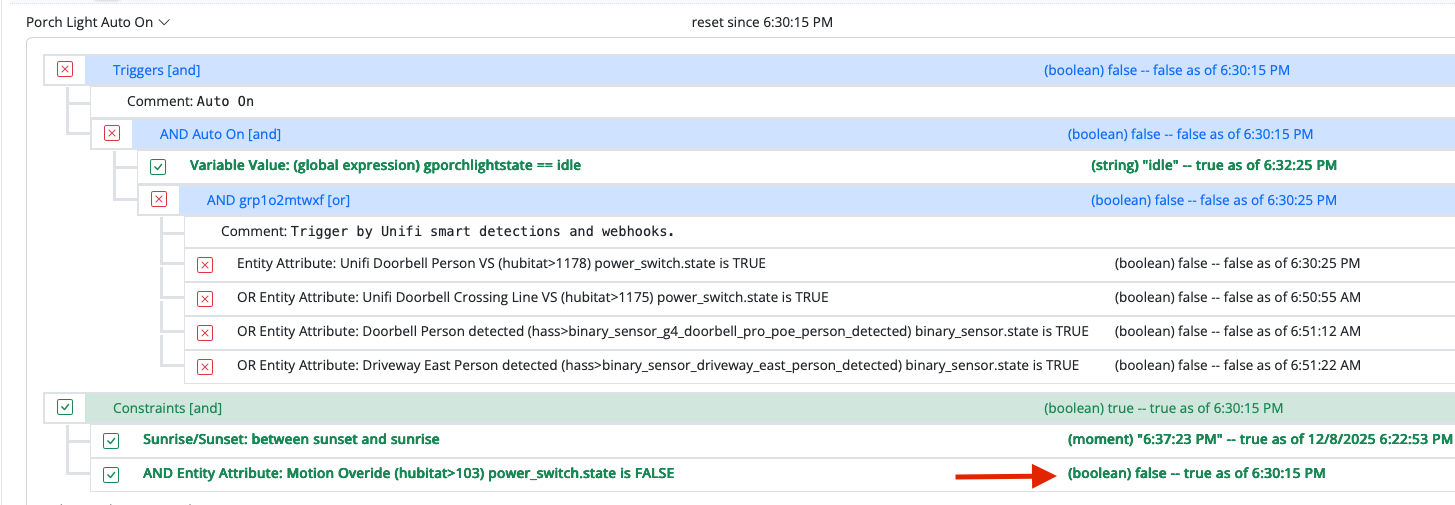
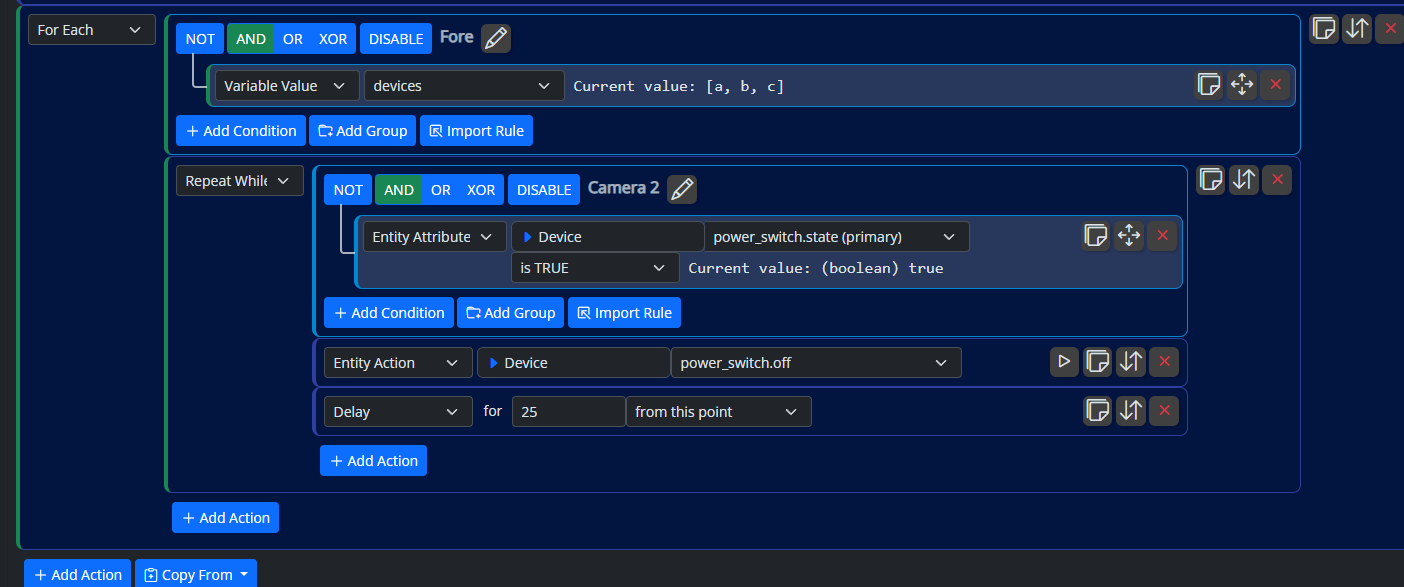




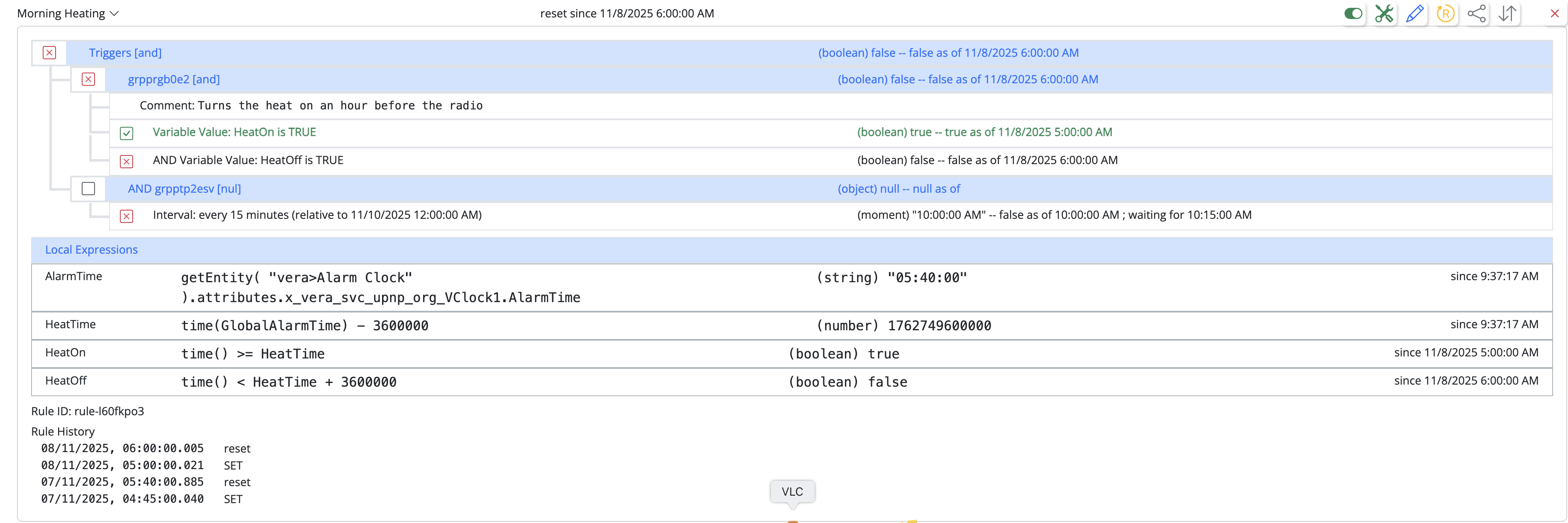


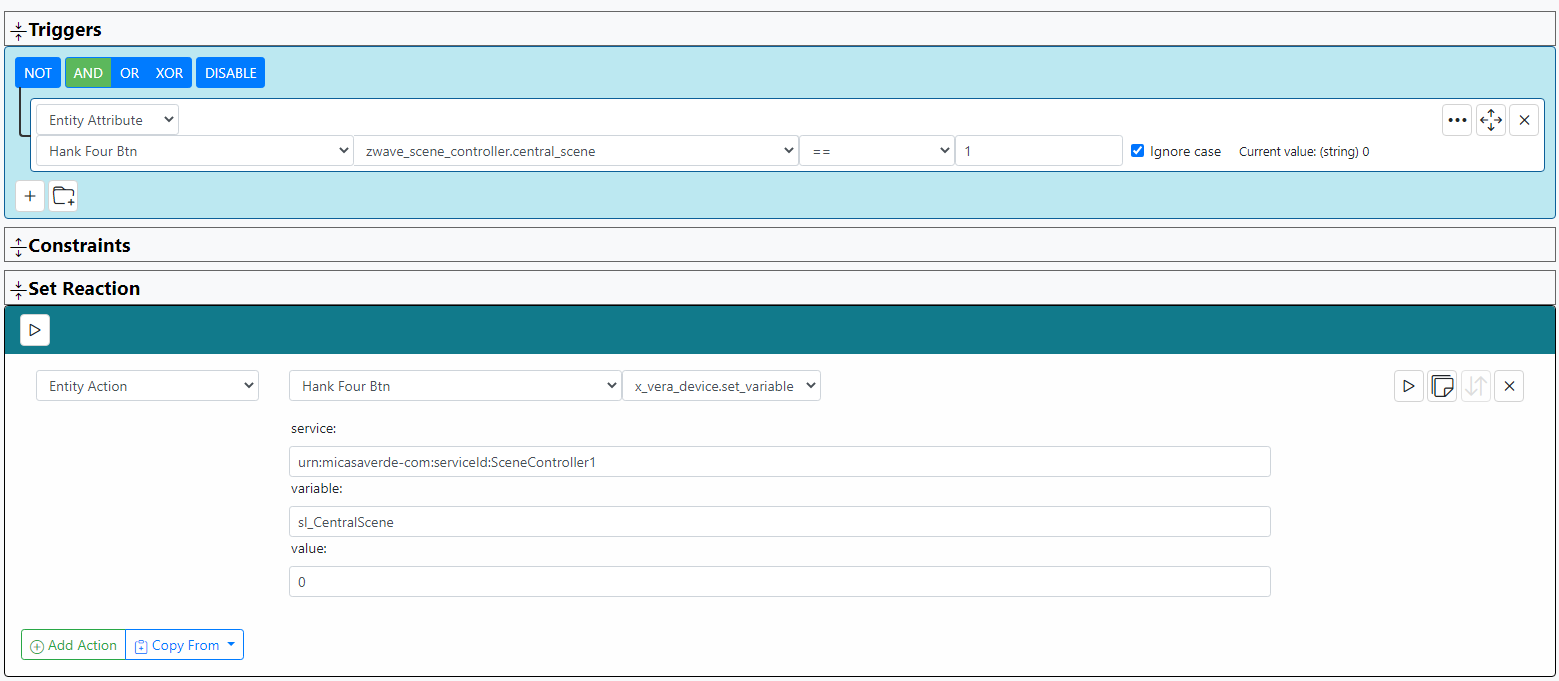
 Double click/triple click is detected with reactor
Double click/triple click is detected with reactor
